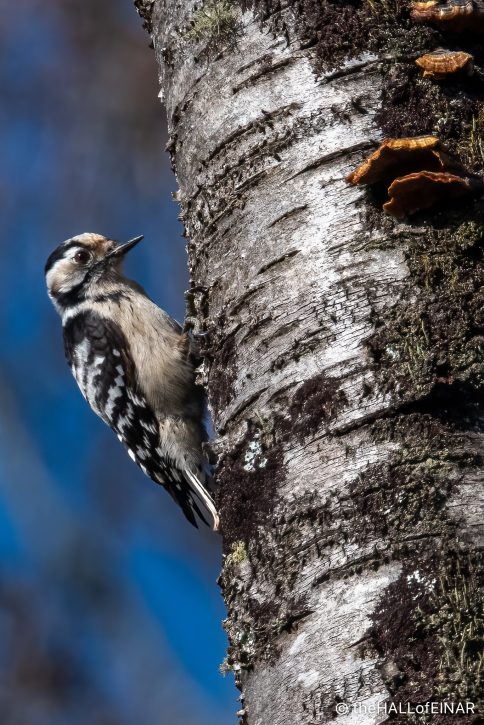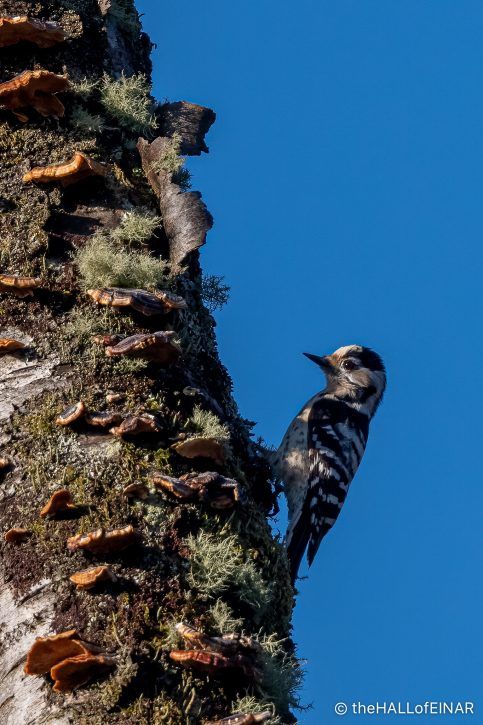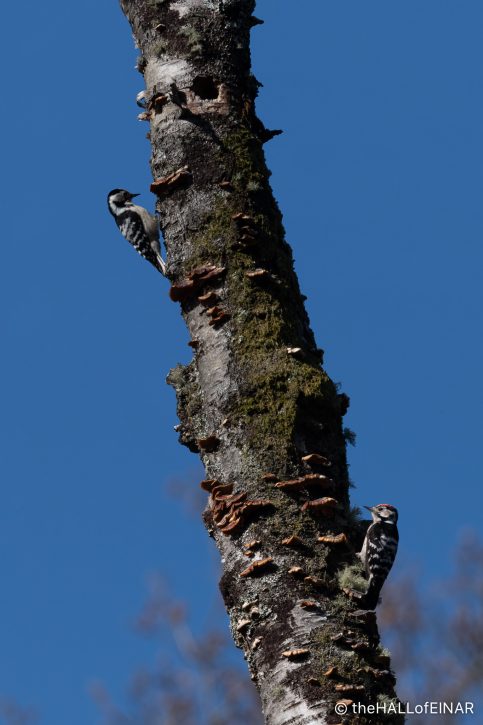Lesser Spotted Birdwatcher
Hello and welcome to my blog, particularly for those who haven’t visited before. This Hall of Einar blog has been going for fourteen years; what kept you? I now post wildlife and nature every day at eight in the morning. I like to think of it as a little bit of sweetness and bitterness, like chocolate and coffee for breakfast, although that doesn’t really work if you’re not in the UK’s time zone. For those of you who are just getting started and may have missed previous series it could be a little like trying to understand what’s going on in Line of Duty Series 6, or, as it’s often referred to, Season 6. Our overheated, protected, urban life means people have higher recognition of the word ‘season’ for TV series than they do for spring, summer, autumn and winter. There. You’re getting the idea now.
This is me:
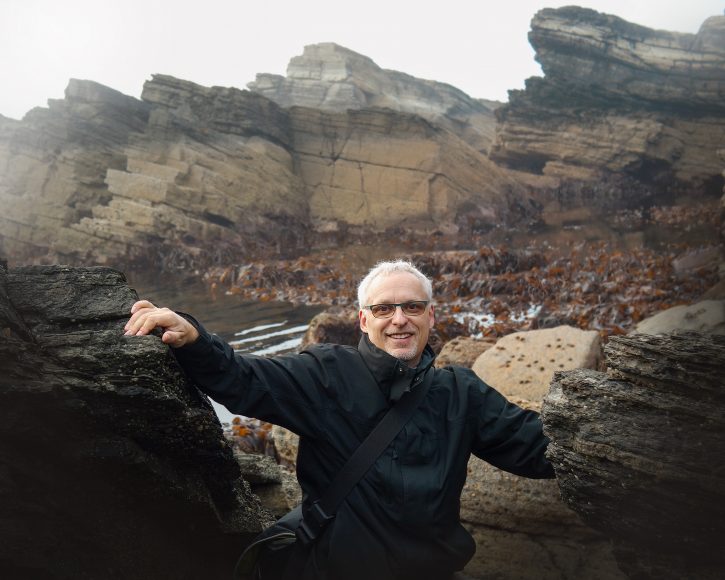
My name is David and I love wildlife and nature. I grieve that we’ve destroyed so much of it and yet have learned so little that we fully intend to carry on destroying it until we destroy ourselves. By that point we’ll have lost our souls. Can we redeem ourselves in time?
The other characters in this episode of the drama are a pair of Lesser Spotted Woodpeckers. This is the female:
If I was being pedantic I would call them Lesser Spotted-Woodpeckers. Hyphens are important, aren’t they? I’m no stickler for grammar but I am a stickler for meaning, and there’s a big difference in meaning when you change the position of a hyphen – just look at the difference in meaning between extra-marital sex and extra marital-sex. People should know the difference between sex outside of marriage and more sex within marriage, especially if they’re the prime minister. I say ‘if I was being pedantic’ as if I have a choice. I once went on a team-building day with a group of staff. We were all asked to write down what it was that we brought to the team. Everyone else wrote page after page of their personal qualities and how it improved our team-working. I wrote “David, the pedant with the eye for detail”. Afterwards, the notes of the day came back and they read, “David, the pendant with the eye for detail.” What I found disappointing, and yet strangely validating, was seeing that I was the only one who noticed the mistake.
Here are my adventures in Rome seeing a Lesser Spotted-Woodpecker:
Lesser Spotted-Woodpeckers are one of three species of woodpeckers in the UK. There’s the Green Woodpecker, which has a canary-yellow rump, red head and green back and wings, and feasts on ants. There’s the Great Spotted-Woodpecker (my hyphen – I told you what I’m like) which isn’t ‘great’ as in wonderful, it’s great as in Great Britain, meaning larger. Britain was the name given to England and Wales by the ancient Romans when they invaded. It only became Great when Scotland was added, as they needed a new name for the larger union. People from Scotland already know that they are the only reason Britain is Great.
The Great Spotted-Woodpecker, or GSW as it is known to people who like TLAs (three-letter acronyms) is only a medium sized bird. It’s not as large as the Ivory-Billed Woodpecker of the USA, last seen in Louisiana 1944, and known as the Holy Grail Bird, which was 50cm long. I didn’t catch a glimpse of the Ivory-Billed Woodpecker when I was in the USA, but I did see a Red-Bellied Woodpecker:
The GSW is black with white spots and may have some red on it.
Here’s one from Italy:
Then there is the Lesser Spotted-Woodpecker. It’s not the spots which are lesser, it’s the woodpecker. It’s the dinkiest of birds, at up to 15cm long. It’s the size of a sparrow. The LSW (see what I did there) isn’t really spotted at all, it’s striped or ‘barred’ with white on a black background.
Here’s the female again:
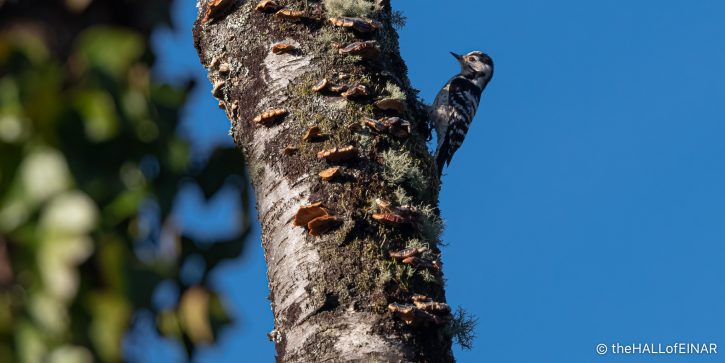
Lesser Spotted-Woodpeckers are rare. There are only 1,000 to 2,000 breeding pairs in the UK according to the RSPB, although I have known their website to be out of date. They are so small that a single leaf can obscure them, meaning spring is the best season to see them. They also have the habit of staying high in the tree canopy to feed, so if you do get a photograph, it’s the underside of a silhouette of something obscured by twigs. At least that’s normally true. Here’s a beautiful side-on closer view:
It’s common for birders to go to a woodland where LSWs are known to be, and to spend hours or days without the sight of one, just catching the occasional feint drumming from a distant dead tree branch. There’s clearly a debate about whether it’s the LSW or the birders who are banging their heads harder against tree trunks. I have been there and I have tasted the disappointment. I do have a photograph of a Lesser Spotted-Woodpecker from the UK in a previous year. It just didn’t meet my quality standards, by which I mean you wouldn’t be able to tell what it was unless you were there.
Here’s the cheeky male, with his bright red cap:
As usual, just click to enlarge the image and see it in all its glory. This magnified view of the female on the lichen and fungus-encrusted birch tree is a personal favourite of mine.
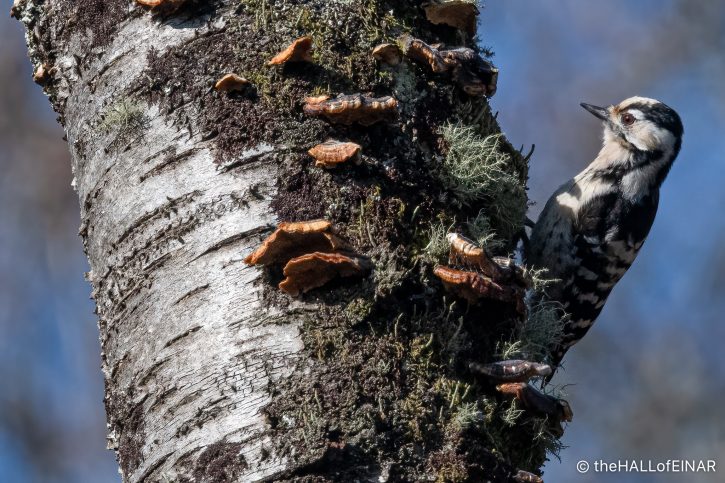
I use the word ‘magnified’ to avoid using the word ‘close’. I wasn’t close, because I was using a 700mm lens from a massive distance and have cropped the images as much as possible, until the pixels squeak. You might think I’d be delighted, and you’d be right, however, the little bit of bitter coffee with this particular chocolate is the potential reaction of other birders. Men, in particular are fiercely competitive. You might think that enjoying wildlife and nature would be a beautiful co-operative thing, with a real sense of community and mutual support for the love of the natural world. It’s not quite like that. It’s highly political, institutionalised, and dominated by aggressive white men ready to lock horns with anyone who threatens their power, territory or tribe.
Knowing the position of a rare bird, or even more, its nest, carries with it power, and that power is a threat to established networks. Mention where you’ve seen a rare bird and there’ll be the inevitable Internet pile-on. In a previous year someone found a Lesser Spotted-Woodpecker’s nest in Devon and the information was shared amongst a few in-the-know. A photographer from another patch found out about it and went closer to the nest than the locals did to get a photograph. The rage generated by that single event spewed on for weeks. They took photographs of the interloper from outside their tribe, posted them all over social media and demanded they be named and shamed. I’m just getting in early and posting a photograph of myself in this blog before someone else does. At least then it’s a nice photograph when they post the ‘wanted’ poster.
Me finding a LSW is like stumbling upon a large bag of heroin in the territory of an organised crime group where I don’t know who is the head of the network and the police could be equally corrupt. Or maybe I’ve just been binge-watching Line of Duty a little too much?
Here’s the female and what could be their nesting hole. It’s about 4 or 5 cm wide and 15 metres up a tree.

And then here’s my personal favourite. The male below, the female above and their ‘nesting hole’ above that.
So, tell me, should I tell anyone the position of the nest? Is it their nest? Is it last year’s? Should I even mention which woods they were in? Is it a mistake to even post that I’ve found it? What should I do if people ask for the position? The woods are full of people in camouflage, with expensive binoculars and huge telephoto lenses, desperate to see it. Will I put the birds at risk? Will I be criticised for disclosing their location, criticised for not disclosing their location or criticised for disclosing their location to the ‘wrong’ person? I’m starting to understand why other people post ‘on private property at an undisclosed location on Dartmoor’ on their shots now. More power to them.
I do love an ethical dilemma. What would you do? Do leave a reply below. I’d love to know.
Oh, and if you’ve enjoyed my photographs and commentary, please consider subscribing or visit all the usual social media channels for daily links on Facebook or Twitter, or the occasional square shot on Instagram. Thanks for visiting.
More wonderful woodpeckers
 That elusive flight shot We discovered a Great Spotted Woodpecker, Dendrocopos major, nest recently. It wasn't the obvious hole in the side of the… read more
That elusive flight shot We discovered a Great Spotted Woodpecker, Dendrocopos major, nest recently. It wasn't the obvious hole in the side of the… read more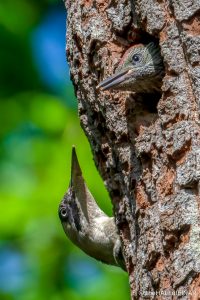 Feeding time The Green Woodpecker chick is now large enough to stick its head out of the nesting hole. Previously all we… read more
Feeding time The Green Woodpecker chick is now large enough to stick its head out of the nesting hole. Previously all we… read more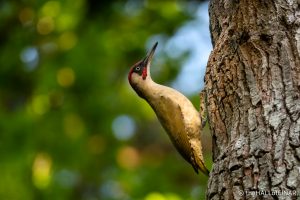 Yet more Green Woodpeckers Being in a portable hide and spending time with these Green Woodpeckers has been a thrill. Here's the male with… read more
Yet more Green Woodpeckers Being in a portable hide and spending time with these Green Woodpeckers has been a thrill. Here's the male with… read more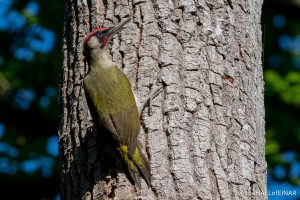 More Green Woodpeckers Okay, I'm getting the hang of these Green Woodpeckers now. You wait for three hours and see nothing. You hear… read more
More Green Woodpeckers Okay, I'm getting the hang of these Green Woodpeckers now. You wait for three hours and see nothing. You hear… read more Finding a Green Woodpeckers’ nest There's the loud laugh of a Green Woodpecker in the woods. My friend abandons his camera and bag and rushes… read more
Finding a Green Woodpeckers’ nest There's the loud laugh of a Green Woodpecker in the woods. My friend abandons his camera and bag and rushes… read more This is the shot I wanted And I didn't disturb the bird to get it. We discovered a Green Woodpeckers' nest just over a month ago.… read more
This is the shot I wanted And I didn't disturb the bird to get it. We discovered a Green Woodpeckers' nest just over a month ago.… read more Can you see it? I'm walking along the outskirts of my local industrial estate when a bird flies up from in front of me.… read more
Can you see it? I'm walking along the outskirts of my local industrial estate when a bird flies up from in front of me.… read more The Lesser Spotted Woodpecker and the one-eyed Fox of Villa Pamphilj We've just arrived at Villa Doria Pamphilj in Rome. I don't see Lesser Spotted Woodpeckers very often but I've got… read more
The Lesser Spotted Woodpecker and the one-eyed Fox of Villa Pamphilj We've just arrived at Villa Doria Pamphilj in Rome. I don't see Lesser Spotted Woodpeckers very often but I've got… read more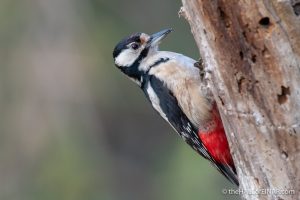 Great Spotted Woodpecker There's a Great Spotted Woodpecker in this Italian forest. I hear the cry "Picchio Rosso Maggiore" and see it approach:… read more
Great Spotted Woodpecker There's a Great Spotted Woodpecker in this Italian forest. I hear the cry "Picchio Rosso Maggiore" and see it approach:… read more